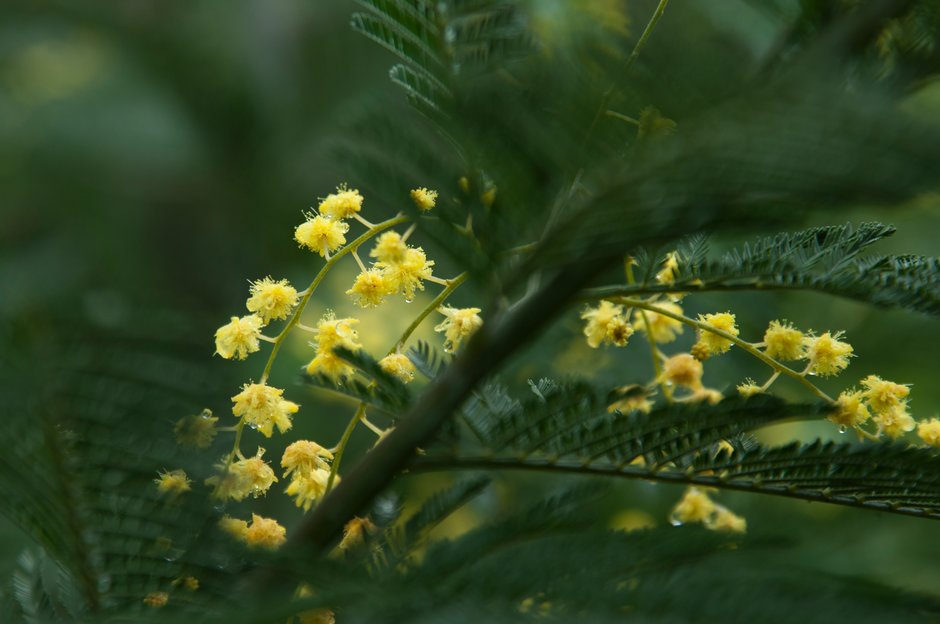Acacia dealbata
blue wattle
An evergreen shrub to 10m or more, with finely divided grey-green leaves and fragrant yellow flowerheads, borne in terminal clusters
Size
Ultimate height
8–12 metresTime to ultimate height
10–20 yearsUltimate spread
2.5–4 metresGrowing conditions
Moisture
Well–drainedpH
Acid, NeutralColour & scent
| Stem | Flower | Foliage | Fruit | |
| Spring | Yellow | Green Grey Silver | ||
|---|---|---|---|---|
| Summer | Green Grey Silver | Brown | ||
| Autumn | Green Grey Silver | |||
| Winter | Yellow | Green Grey Silver |
Position
- Full sun
Aspect
South–facing or West–facing
Exposure
ShelteredDrought resistance
Yes Hardiness
H3Botanical details
- Family
- Fabaceae
- Native to GB / Ireland
- No
- Foliage
- Evergreen
- Habit
- Bushy
- Genus
Acacia can be deciduous or evergreen trees, shrubs or climbers, with alternate, pinnately divided leaves or simple modified leaf-like stalks (phyllodes), and tiny, sometimes fragrant, flowers in short spikes, or in racemes or spikes of spherical heads
- Name status
Correct
- Plant range
- Tasmania, Australia
How to grow
Cultivation
Grow outdoors in neutral to acid well-drained soil in sheltered location with full sun. Suits urban gardens or milder south west localities, may need winter protection elsewhere. Under glass grow in peat-free, ericaceous or loam-based compost in full light. Resents hard pruning
Propagation
Propagate by seed or semi-hardwood cuttings
Suggested planting locations and garden types
- Patio and container plants
- City and courtyard gardens
- Cottage and informal garden
- Flower borders and beds
- Wall side borders
Pruning
Pruning group 8 or pruning group 13 for wall-trained specimens
Pests
May be susceptible to glasshouse red spider mite, fluted scale and mealybugs
Diseases
May be susceptible to honey fungus
Get involved
The Royal Horticultural Society is the UK’s leading gardening charity. We aim to enrich everyone’s life through plants, and make the UK a greener and more beautiful place.
